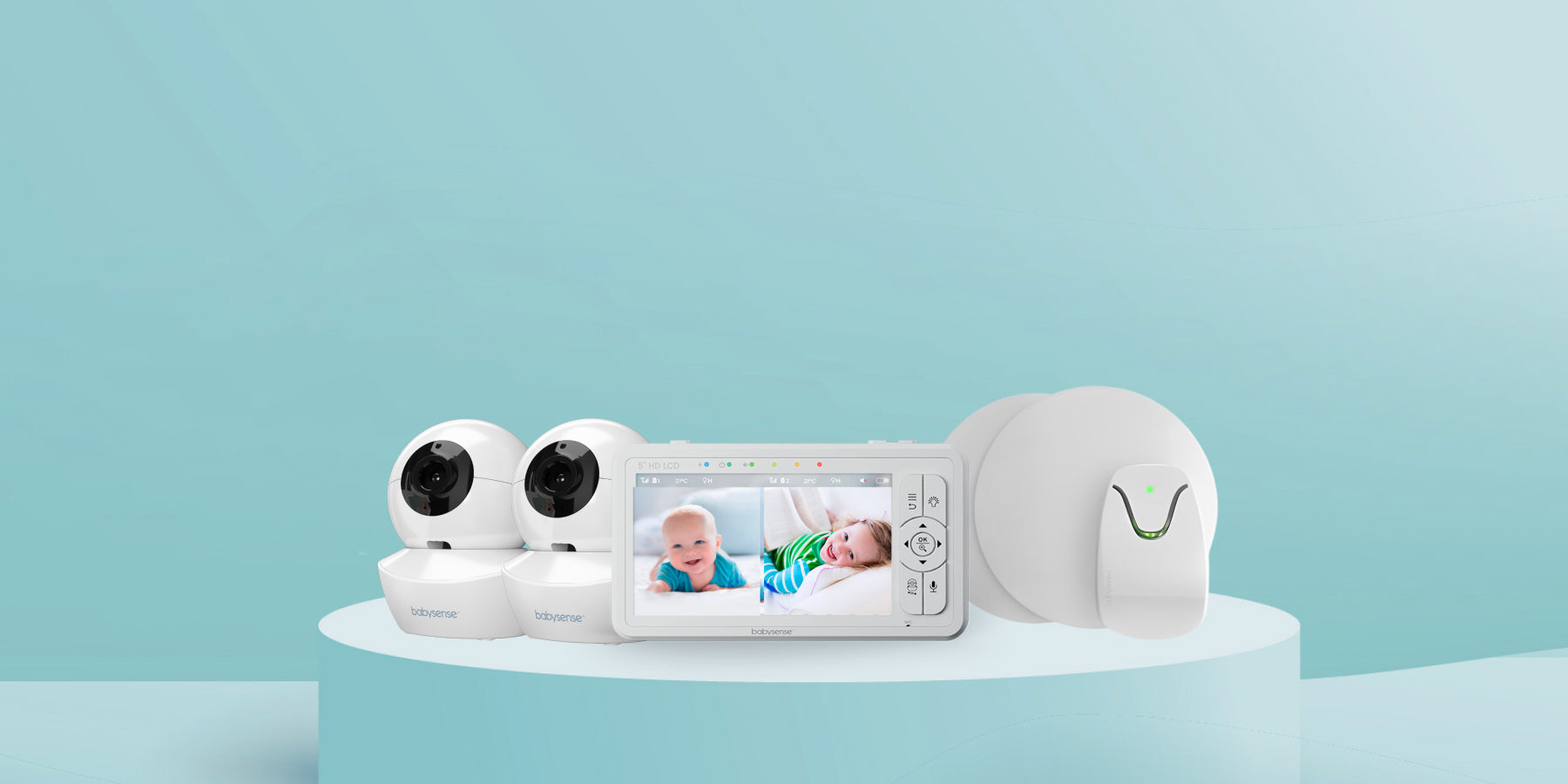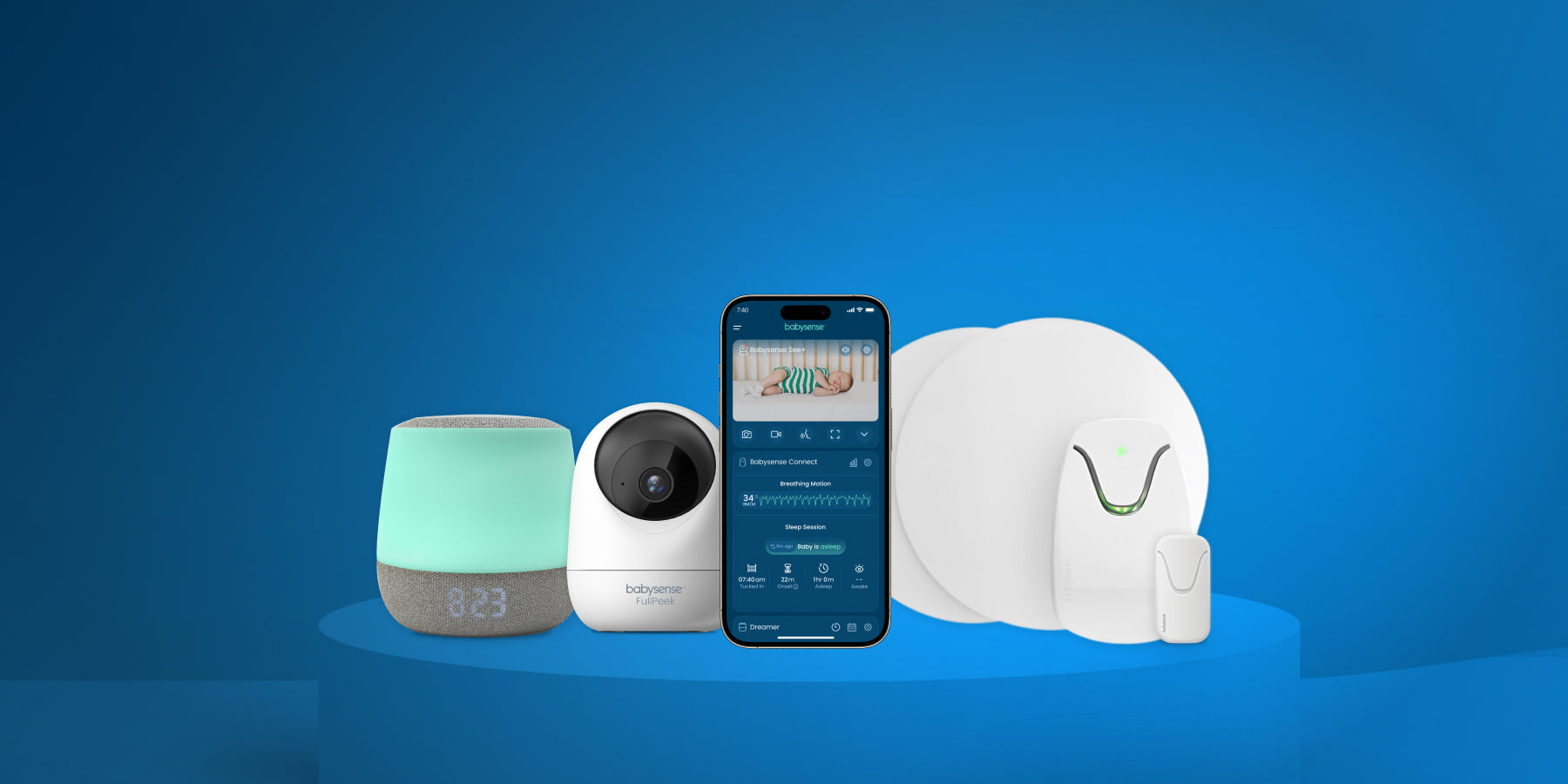You have a new baby on the way, and you’re starting your search for the perfect baby monitor. There are lots to choose from, and you’re not sure which one is the right one for you and your family. Do you want an analog baby monitor or a digital one? Maybe you want a baby monitor that you can access remotely via your Smartphone or you may be wondering whether a baby monitor can get hacked.
The simple answer is that yes, some baby monitors can get hacked, but choose carefully and you won’t need to worry about this.
Unfortunately, some WiFi baby monitors have weak security protocols in place that make them susceptible to hackers. In some cases, this isn’t a monitor problem but rather an issue with the online portal that you access through an app.
Hackers can get to Smart baby monitors quickly, and once a hacker gets access, it’s like leaving the door to your house wide open. Once the hacker has access to one device, they can access all other devices connected to the Wi-Fi network. The threat to you and your family includes potential theft, violations of privacy, and unnecessary stress.
In this article, we’ll be looking at different types of baby monitors and the types of hackers out there. We’ll review the various ways hackers can access your baby monitor and what you can do to protect you and your family from being hacked. We’ll also recommend a baby monitor that we believe gives you the type of protection you want and need for your family.
Different Types of Baby Monitors and their Risks
Digital Baby Monitors
Digital baby monitors use encrypted data to transmit audio and video to connected devices. Digital monitors are more secure than analog baby monitors because their encrypted data prevents accidental signal interference. However, if someone wants to hack a digital baby monitor, they’re going to have to make an effort to make it happen.
Frequency Hopping Spread Spectrum (FHSS)
Some digital baby monitors use FHSS to avoid accidental eavesdropping. FHSS changes the signal’s channel quickly, making it harder to hack the signal and access video or audio. While this technology makes it more challenging to hack the baby monitor, it is still possible with the right equipment to follow the signals as they hop.
Digital Enhanced Cordless Telecommunications (DECT)
DECT is another technology that some baby monitors use to make it harder for hackers to access any video or audio transmitting. Wireless devices that use DECT technology are less sensitive to signal interferences. DECT is another technology that protects baby monitors from accidental access to audio or video.
Despite the protection DECT provides, baby monitors using this technology aren’t immune to being hacked. It’s just a matter of finding the right equipment to intercept the signal.
Wi-Fi Enabled Baby Monitors
Wi-Fi-enabled baby monitors are often chosen because they give you an unlimited range. You can leave your baby with the sitter and check on them via an app on your phone. Unfortunately, these types of baby monitors are the primary target for hackers. People who hack Wi-Fi-enabled baby monitors take advantage of old firmware and security breaches that uninformed consumers create.
Our guide on how to secure a wifi baby monitor provides you with everything you need to know about keeping your baby safe.
Can a non-wifi baby monitor be hacked?
It is less likely for a non-wifi baby monitor to be hacked as it usually doesn't have as much complicated software that can be compromised. However, this shouldn't mean you take a non-wifi baby monitor security less seriously.
Analog monitors, which non-wifi baby monitors are, work using the same technology as a radio or over-the-air TV signals, a bit like a walkie-talkie. This means that if a hacker figures out the frequency your baby monitor is using, they will be able to hack into it and listen to what's going on in the room.
Our handy guide to the difference between a wifi baby monitor vs non-wifi baby monitor should help you decide which is best for you and your family.
Why Do People Hack?
You may be wondering what the point of hacking is. Hackers are motivated by different things. The motivation doesn’t matter. Whatever the reason, it’s an invasion of privacy and illegal. Here’s an overview of some of the types of hackers out there.
For Pranks
Some people hack into baby monitors to give you a scare. When this happens, you’ll hear voices speaking to the baby. You might think that there are ghosts or spirits in your home, but a quick search on a chat group will confirm that this is a prank that happens often.
To be a Voyeur
Some hackers like to watch. They can catch intimate moments like breastfeeding or anything else in the room where the monitor is. They can even listen in on conversations that occur in the room.
Burglary Preparation
Hackers may be accessing your baby monitor to watch your routine and see what your schedule is. They are monitoring you to figure out the perfect moment to rob you.
Identity Theft
Some Hackers use the access to audio and video through your Wi-Fi-enabled baby monitor to get to other devices to get to your email passwords and online banking.
Criminal Activity
The ability to spy on you via video or audio allows hackers to get private and intimate details about your life that they can use to blackmail you and extort money from you.
Ways Hackers can Access Video and Audio
It’s more difficult to hack into an analog baby monitor, but if the hacker succeeds it’s easier to find the hacker since they have to be pretty close to intercept the radio signal. Digital baby monitors that are Wi-Fi enabled are accessible by anyone with an internet connection. This type of access makes you vulnerable to many hackers, from criminals, creeps, and trolls.
Normal Internet Access to Router
Even if you have firewall protection, your baby monitor is vulnerable to hacking. Hackers can access the video captured by the baby monitor, even if you have a password set up. If you have the password disabled, you make it easier for the hacker to get in. Hacking via normal internet access to the router also gives the hacker remote access to baby monitors.
Getting to the router through unauthorized internet access isn’t something that happens often. However, if you have teens in the house, you may want to check with them to see if they’ve been using programs like BitTorrent or video games that require high bandwidth. If they have, you will need to change your router settings.
Remote Administrator Access to Router
Whether you have a password set up or not, hackers can gain access to your baby monitor. They can access your camera, even if you’ve set it up to have its own password protection. If a hacker gets administrative access to the router, they can access anything connected to that router.
You want to avoid accessing your router remotely through the router’s admin page through wide-area network settings or the internet. Using this type of access leaves you vulnerable. You want to disable the feature “Allow Setup over WAN” on your router.
User/Administrator Local Access to Router
User/administrator local access to the router is another case where it doesn’t matter if it is password protected. Hackers can gain access to your baby monitor whether you’re connected wired or wireless. The access goes for the baby monitor video access, and having a password on the camera won’t help.
This situation is similar to accessing the router remotely. In this scenario, the exception is that the hacker has to be within Wi-Fi range or plug into the router directly to hack in. You’re open to this type of hacking if you’ve ever had an open house, a house party, or used a house sitter. It’s even worse if you’ve left your Wi-Fi open without a password.
Recommended Baby Monitor
If you’re looking for a baby monitor that offers protection against hackers, we recommend the Babysense line ofvideo baby monitors. Babysense baby monitors feature 2.4 GHz FHSS technology. This secure wireless technology provides safe and secure digitally encrypted wireless transmission from point to point.
The Babysense baby monitor operates on a 2400-2480 MHz auto-tuned frequency that reduces the risk of other electronic devices in the vicinity interfering with it.
The Babysense monitor offers the best results when there is a three-foot distance between the camera and parent units. Other electronic devices should be outside that distance, allowing for smooth reception of audio and video signals.
Who is Babysense?
Babysense developed the world’s first non-touch breathing movement monitor. The company created the monitor that detects respiratory cessation (apnea) in infants, and the creation happened not too long after the company began operations in 1991.
Babysense’s core focus is to provide peace of mind for parents and safety for babies, and they illustrate this in the products they create.





